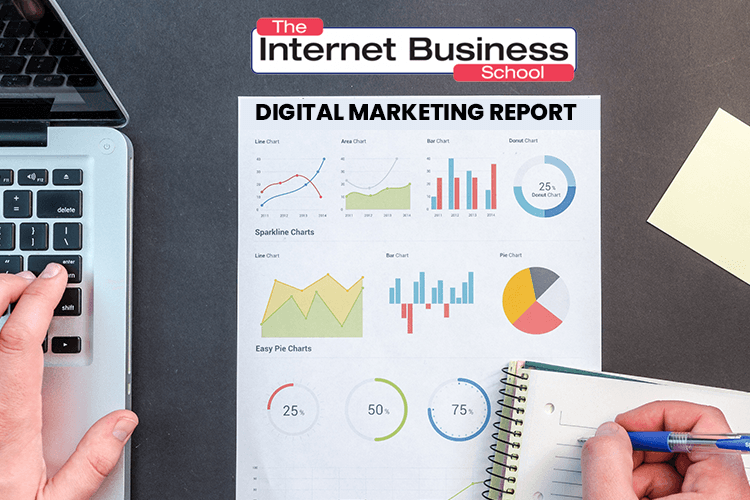
VIEW DIRECTLY OR DOWNLOAD A PDF OF THIS NEWSLETTER HERE


Making sure your site ranks at the top of search engine rankings is essential to getting your online business seen. That’s why here at the Internet Business School, we’re always keeping an eye on the top SEO techniques small businesses can use to get the edge over their competitors. So what should you be keeping in mind when optimising your site?
1) Find the Best Keywords for Your Website
Make sure to know what your customers are searching for before you optimise your site. There’s no point spending time and money on something that won’t even bring you more sales. There are multiple tools out there which will tell you how often people are searching for select keywords. Many of these tools are absolutely free and offered by the search engines themselves. Google will even calculate how successful your keyword choice is when you choose a listing. Investing time into finding the best keywords that generate the most leads is essential for increasing your reach.
When using any SEO tool for keywords research start with ambiguous searches, create categories and drill down to create smaller more specific groups of keywords. These groups can later be used as clusters of keywords for any Sponsored Ads you create. With SEO, these groups can also be used as directories of the content who will want to have on your website. Long tail keywords are ideal for generating sales. Rather than short vague keywords such as ‘kindle’, ‘brown shoes’ or ‘laptop’ use longer more specific keywords, for instance ‘buy used amazon kindle’ or ‘nike brown shoes size 10’.
2) Do Competitor Research
Search engines analyse incoming links to your website for their rankings. Therefore knowing how many incoming links your competitors have will give you an edge over their businesses. Of course the first step to this is knowing who your competitors are in the first place. When analysing your competition you should consider these very important linking criteria:
Many SEO tools will provide you with quick and easy competitor research options. However here are some other factors you should consider when scouting out the competition:
3) Write Content People Want to Link and Share.
Just writing a generic article full of keywords isn’t going to automatically get you a high ranking. Link-building is essential for building up a good reputation with the search engines so it’s important to get people interacting with your content and sharing it. Keep the following checklist in mind to get a higher ranking in search engine results, many of the suggestions came straight for Google.
4) Optimise your title and meta tags.
HTML titles and meta tags should be different on every page of your website if you wish for search engines to list them in their search results. Google does not use the meta keywords tags in their ranking. Google accounts for 64% of all searches, so do not dwell too long on your meta keywords tags.
Google only shows the first sixty-six characters in their search titles. Therefore it may be best to keep your titles to under sixty-six characters whilst still keeping the title relevant to the content. When it comes to the meta description, include your top terms in a description that reads properly and doesn’t look like spam. It should give a clear indicator as to what your site is about. Amazon’s meta description is a good example of a clear explanation that includes many keywords:
“Online shopping from the earth’s biggest selection of books, magazines, music, DVDs, videos, electronics, computers, software, apparel & accessories, shoes, jewelry, tools & hardware, housewares, furniture, sporting goods, beauty & personal care, broadband & dsl, gourmet food & just about anything else.”
5) Optimise Your Headings and Subheadings
Headings play an important role in organising information for search engines, so make sure to include online one H1 tag when creating a page, and optionall using one or more subheading (H2-H6). You can use Cascading Style Sheets (CSS), to make your headers more appealing. Here’s a piece of code you can use in your heading:
<style type=”text/css”>
h1 font-size: 18px;
h2 font-size: 16px;
h3 font-size: 14px;
</style>
Since a page full of headings would be completely useful, add content between them, 400+ words per page is recommended.
SEO has never been more important for businesses of every size. From small start-ups to big corporations, everyone needs to rank highly on Google and they’ll pay large amounts to learn how. SEO experts are desperately needed to keep up with this demand. Now it’s your chance to make money off this panic. Discover everything you need to become an SEO consultant and learn all the tricks of the trade with our Professional SEO Consultant training course. Visit the course page to find out more! You can even get 50% off this amazing course with the code SEO50

Hello fellow marketers and welcome to this week’s edition of The DM Report!
We hope you enjoyed last week’s launch edition all about ‘AIM’, or as you now know it – Artificial intelligence Marketing. It’s always interesting learning about new technologies such as ‘AIM’ and what it’s doing for us all now and what it might do for us in the future.
This week we’re straying away from the digital marketing trends and turning our focus towards ‘Side Hustling’.
What in the world is side hustling you ask? Let us explain…
The common definition of side hustle is that it’s a way to make some extra cash that allows you flexibility to pursue what you’re either most interested in, most skilled at or both. Look at Side Hustling as a chance to delve into fashion, travel, online marketing or whatever it is you are passionate about without quitting your day job.
According to entrepreneur.com and many other sites out there, it’s agreed that it’s a great idea if you need something to fill in any gaps in your week, to help you make some extra cash or if you simply need a break from the repetitiveness of your usual income.
Entrepreneur.com has a list of 50 ideas for a side hustle endeavor and we’re about to take a look at some of the most common from across the web.
We could go on for hours listing all the possibilities that are out there for side hustling. If you’re strapped for cash or just want to do something that benefits others these are just six simple ideas to get you thinking.
If you have spare time to go out and make a difference in someone’s life by doing something that helps them and eventually helps you to make a little bit more cash on the side, then it’s a hustle worth hunting out!

Hello fellow marketers and welcome to the brand new, weekly ‘DM Report’ from the Internet Business School.
We will be blogging about all things Digital Marketing and the new trends that are present today, tomorrow and into the future each week.
What can you expect from ‘The DM Report’?
The blogs will cover specific topics once a week that are trending within the Digital Marketing world. We want to ultimately inform you of what the new trends are, break them down so you can gain a better understanding of what each topic is, how it affects the rest of the marketing world and how it might affect you too.
Let’s get reporting!
The first topic to discuss here is Artificial Intelligence Marketing or ‘AIM’. If you’re thinking robots like those in Steven Spielberg’s ‘A.I.’ or ‘I Am Robot’, it’s not quite that but the concept is kind of like a robot!
Let’s break it down, just what is ‘AIM’?
The trend around the World Wide Web is pretty much the same when you do a search for AI Marketing; it’s a way for marketers much like you and I, where large amounts of information are brought together through the use of algorithms. From searching things online, to how we communicate online and then compiling all that data into one report for marketers to formulate the best course of action for their campaigns. In essence ‘AI’ is generating a model that can predict your customers next move and help you refocus your campaign to make your customers experience stronger.
There are many companies out there that are leading the way for ‘AIM’ and the one that I referred to the most in my research is Emarsys.com, they helped this confused Digital Marketer gain a better understanding of what ‘AIM’ is and also gave some good insight on breaking it down.
Emarsys.com talk about 3 core elements when it comes to ‘AIM’:
1) BIG DATA: In basic form, what they are saying here is that big data is all the information that consumers and customers search for on the Internet, such as habits, likes and dislikes, activities, and personal preferences.
Social Media: (Facebook, LinkedIn, Instagram, Snapchat, YouTube and similar) Social activity, product reviews, ‘liked’ and shared content, loyalty/reward apps and CRM (Customer Relationship Management), these are all things that contribute to big data. All this information that the ‘AI’ gathers from the big data gets fed into the system and then it starts to learn from all that data, what we like to call ‘Machine Learning’.
2) Machine Learning: This is where AI gets to shine – so to speak – after it’s gathered all the big data it then breaks it down into four sub-categories; common occurrences, common insights, responses and actions.
All these compiled together help to draw conclusions for us the marketers, on where the marketers should be focusing their efforts to maximize their campaigns and reach the most people. Which leads to solutions that help AIM to help us.
3) Powerful Solutions: There really isn’t much out there about this core element at the moment, but I’m sure that as ‘AIM’ develops further more will come from it. However, what we can discern from this research is that the powerful solutions side of ‘AIM’ is what’s considered to be the human side of AI. It can understand and eventually learn from the way each and every one of us communicates via social media, blog posts, yelp reviews, even Google searches! Then it takes all that it has learned and sends it to us marketers so that we can compile the data and come up with strategies and campaigns to get our product and services out to the masses.
Those are the basic, core concepts of ‘AIM’ now let’s take a brief look at the five core benefits of ‘AIM’:
1) More Intelligent Searches: RFSE’s (or ‘Rapid-Fire Search Engines’, such as Google), this is where ‘AI’ is paying very close attention to what you are searching for everytime someone says “Google it!” or if you’re trying to find out something that you just don’t have the answer to.
With all these RFSE’s that happen on any given moment during the day, ‘AIM’ takes all that into consideration and it reports back to us the marketers to identify key areas that we should be focusing on when marketing to the customer.
2) Smart Ads: This ties back into the more intelligent searches as well as the machine learning and the powerful solutions mentioned above. ‘AIM’ is using all this information to attach ads to the sidebars of your Yahoo page or when you are Google searching. It places those ads in strategic spots so it’s more appealing to the customer.
Plus ‘AIM’ takes all this and puts it into the big data which in turn is giving us the marketers more insight into what ads can and should be running.
3) Refined Content Delivery: ‘AIM’ is taking all that information from the searches and the smart ads doing just what this benefit suggests, refining the content. It’s basically identifying potential clients/buyers to us marketers and then in turn either we deliver or ‘AIM’ delivers the content for us.
4) Relying on Bots: ‘AIM’ is always learning every second that we are online, chatting with friends, posting on social media. Today you may have noticed that some websites that you visit a little window pops up in the lower right hand corner.
Say hello to the AI bot chat function! Just when you think it’s an actual person on the other side of that box, guess again. It’s ‘AIM’ trying to figure out what it is the customer is there for and then directing them to the desired service that they are looking for.
5) Continued Learning: As mentioned already throughout this blog post, ‘AIM’ is always learning. It’s tapping into once-hidden insights that will give an advantage to us marketers, in coming up with new and insightful campaigns to spread the word about certain products and servers that we are in charge of.
More importantly it is optimising the outreach of just those we feel would benefit from the product or service we are marketing, but ‘AIM’ is helping us target the right customer – clever!
From this marketers viewpoint ‘AIM’ seems to be a good thing for us in the field of marketing as it will shorten the amount of time we spend in the office looking at mounds of data, and help us redefine how we go about providing the products and services to the general public.
Thanks for reading, there’ll be more form The DM Report next week!
The author: Phillip Kirks is an Apprentice of the Internet Business School. When he’s not writing engaging, factual Blogs for our students, he runs his own production company and is a keen filmmaker and producer. He currently lives in Denver, CO.